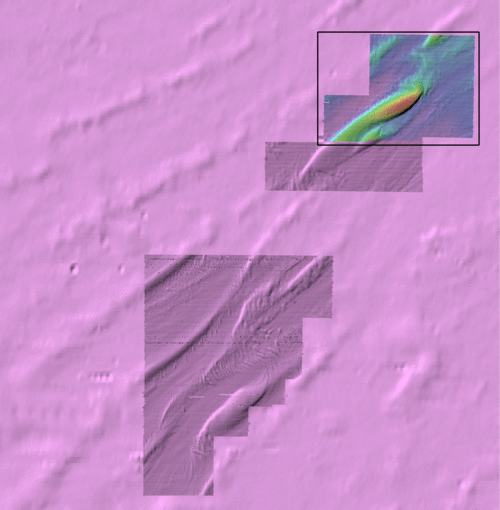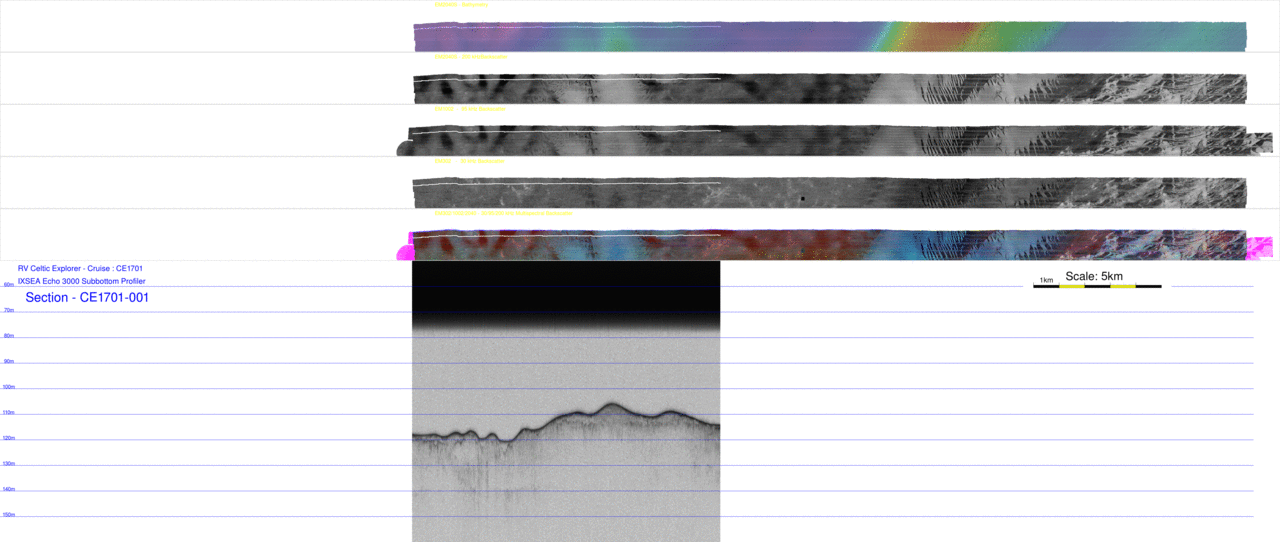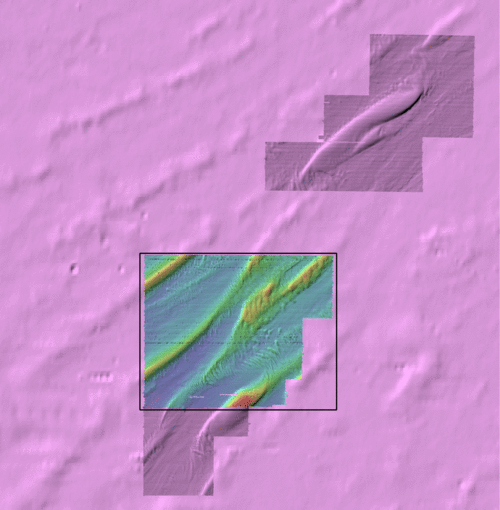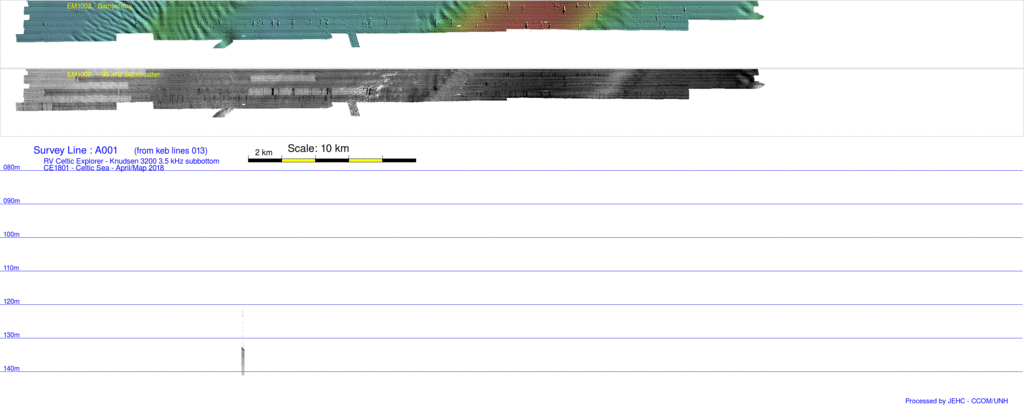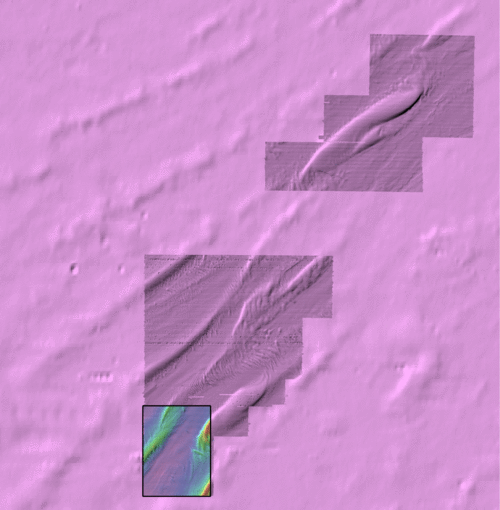
The 2016 survey was the most distal:
It clearly has that channel structure - it is almost entirely developed between the ridges though. Notably, absolutely no surface expression of it.
It starts ~1/3 of the way down the map, in the centre of the lowland areas, and tracks obliquely across the lowlands, slowly converging with te eastern flank of the western ridge.
At the very northern end, there is a glimpse of a few channels under the western ridge, but they disappear (whether due to masked by ridge or not present anymore isn't clear).
The question is, whether we can trace this character up into the 2018 data to the north.

